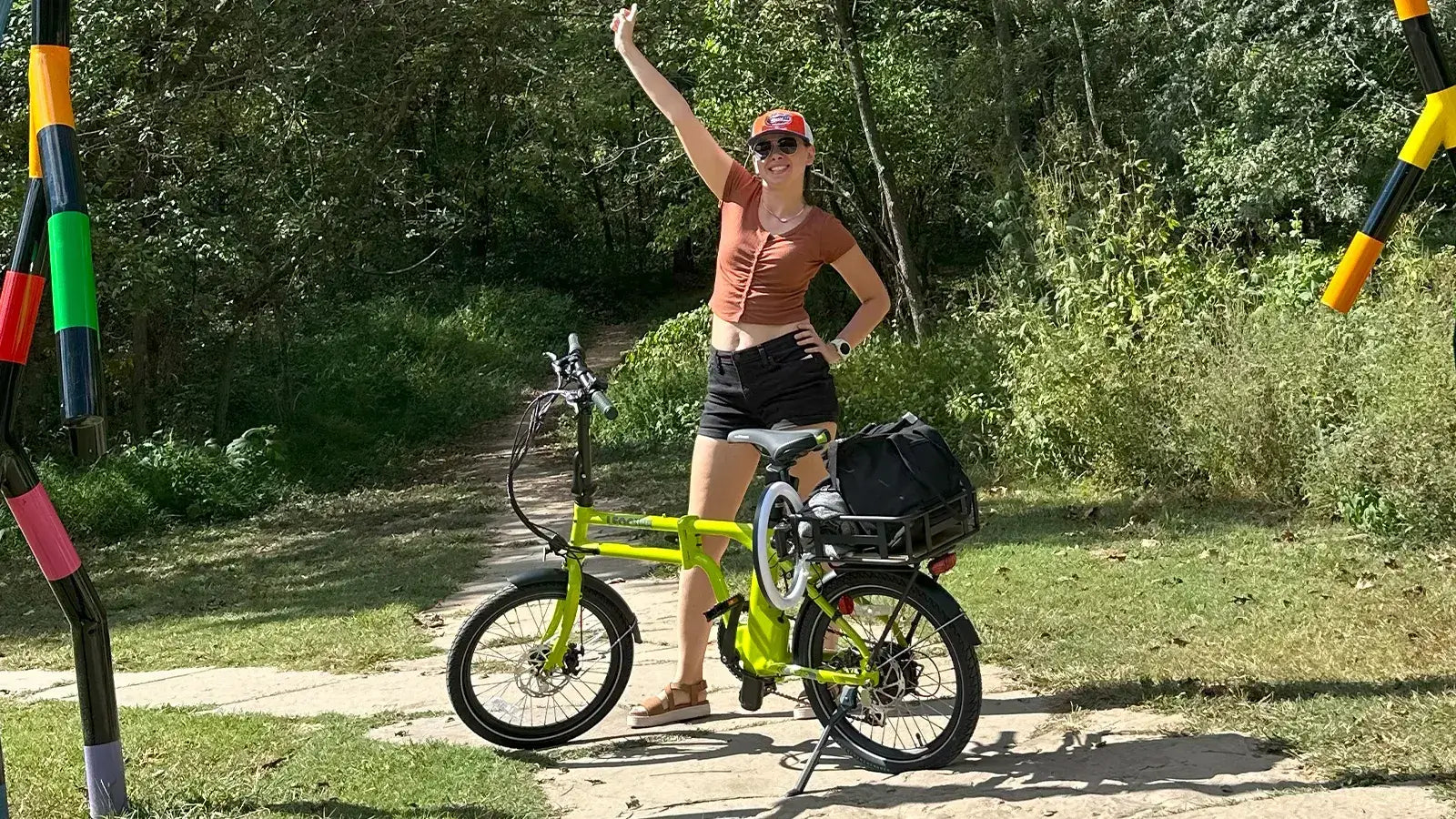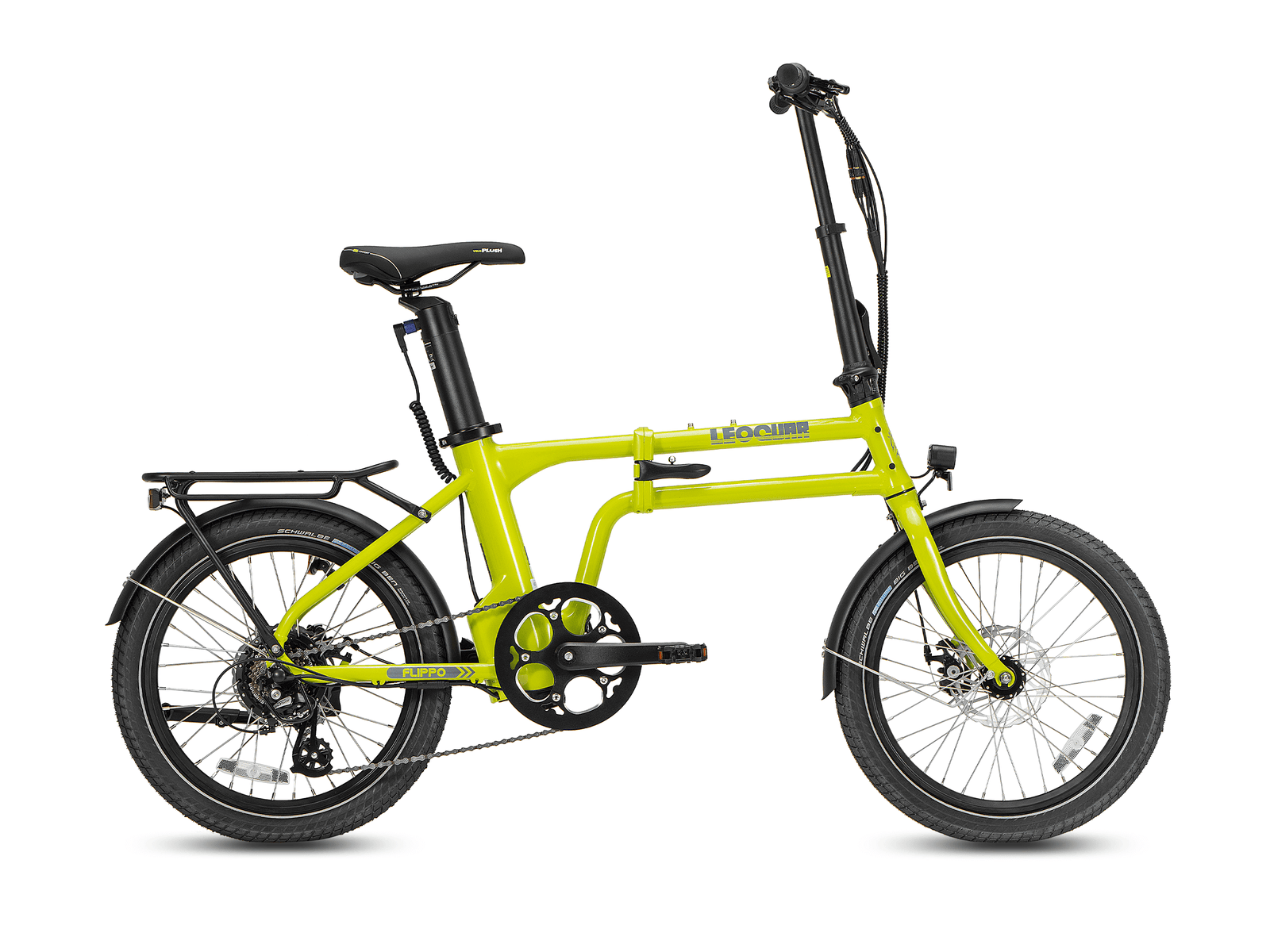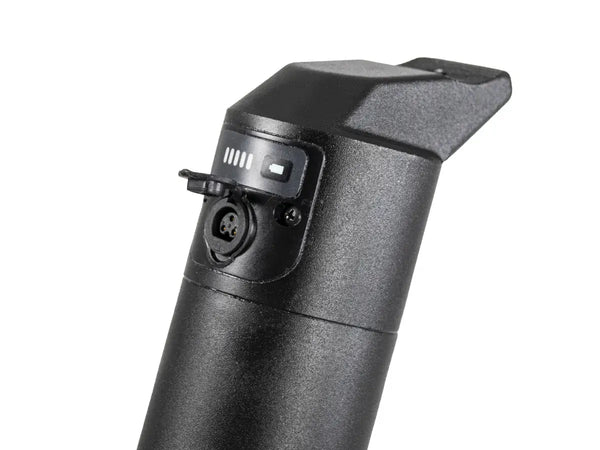
Best Long Range Folding Electric Bikes: 50+ Miles, Zero Bulk
The Dream of Powerful Portability
The appeal is clear: a powerful electric bike that can carry you over 50 miles on a single charge, then fold neatly to fit in your car trunk, apartment corner, or RV. It's the promise of ultimate freedom that draws so many riders to explore their options. But for many, this dream hits a wall—the fear that a long range folding e bike must be a heavy, hard-to-handle beast.
The assumption is simple: big battery plus powerful motor equals a bike that's a pain to lift, awkward to move around, and slow to ride. We're here to tell you that this is wrong. It's totally possible to find a long range folding e bike that feels balanced, quick, and easy to handle without giving up the distance you need. The secret isn't about finding the lightest bike on the market; it's about understanding what makes a bike feel heavy in the first place.
In this guide, we'll show you how to look beyond the number on the spec sheet and check a bike's felt weight instead. Smart design, good parts, and proper balance determine how heavy a bike actually feels when you ride it.
The Weight vs. Range Problem
To understand the solution, we first need to get the core problem. The link between an e-bike's range and its weight is direct and mostly unavoidable—there's no getting around basic physics here. A longer range needs more energy, which means a larger battery. Batteries, filled with dense lithium-ion cells, are one of the two heaviest parts on any e-bike, right alongside the motor that powers your ride.
Think of it like a car's fuel tank. A larger tank lets you drive farther between fill-ups, but it also adds weight when full, affecting how the car handles and performs. The same rule applies here with electric bikes. For context, a standard 500 Watt-hour (Wh) battery, common on many commuter e-bikes, typically weighs between 6 and 8 pounds (about 3-4 kg). To get a true 50+ mile range, you often need a battery with a capacity of 720Wh, 960Wh, or even more depending on your riding style and terrain.
These high-capacity batteries can easily weigh 10 to 13 pounds (4.5-6 kg) or more. This extra weight is the basic trade-off for endurance, but while this trade-off is real, its effect on your daily experience can be dramatically reduced through smart engineering and thoughtful design choices.
Beyond the Spec Sheet
This is where we move past simple numbers and into the real-world experience of using a long range folding e bike. The most important factor isn't the total weight listed on a website; it's how that weight is spread out and managed by the bike's design philosophy.
Actual vs. Felt Weight
Let's define two key ideas that will change how you shop for e-bikes. Actual weight is the number on the scale—what the bike weighs if you put it on a bathroom scale in your garage. Felt weight is how heavy that bike feels when you ride it, walk it up a curb, or lift it into a car for transport.
We've tested countless e-bikes, and we can tell you from first-hand experience: two bikes with the exact same 65-pound actual weight can feel worlds apart. One might feel smooth and quick, its weight seeming to disappear once you start pedaling and get moving. The other can feel clumsy and top-heavy, constantly wanting to tip over at low speeds and feeling like a major workout to lift. This difference comes down to the center of gravity.
The Key Center of Gravity
The center of gravity is the single most important design element that affects a bike's felt weight. A low and central center of gravity makes a bike feel stable, planted, and much lighter than it actually is when you check the specs. It responds in expected ways to your inputs and feels like an extension of your body rather than a machine you're fighting.
On the flip side, a high or rear-heavy center of gravity makes a bike feel top-heavy and hard to control. The placement of the two heaviest parts—the motor and the battery—determines this quality more than anything else, so smart buyers focus on these components first.
Motor Placement Matters
The location of the motor has a huge impact on balance and how the bike feels under you. There are two main types used in folding e-bikes, and the difference is significant.
Mid-Drive Motors are positioned low and in the middle of the frame, right where the pedals are located. This is the best location for a low center of gravity since it puts weight where it's easiest to manage. It results in better balance and a natural, easy riding feel that most riders prefer. The bike feels more like a traditional bicycle, making it feel lighter and more responsive to your movements.
Hub-Drive Motors are located in the hub of either the front or rear wheel, which is simpler but creates balance challenges. While effective and often more affordable, they place heavy weight at one end of the bike instead of the center. A rear hub motor, the most common type, can make the back of the bike feel heavy and hard to handle, especially when lifting it into storage. It can also create a pushing sensation rather than the smooth feel of a mid-drive system.
As experts at ebiketips note, smart shoppers should consider factors like motor type and battery size when checking a bike's handling.
Battery Integration and Frame
Just as important as the motor is where the battery sits on the frame. A bike with a large battery mounted high up on a rear cargo rack will always feel top-heavy and unbalanced, no matter how good the rest of the design is. The better design for a long range folding e bike is one that builds the battery into the frame's downtube (the main tube running from the handlebars to the pedals).
This keeps the weight low and central, helping create a stable ride and a lower felt weight. Most quality frames use a 6061 aluminum alloy, which gives an excellent balance of strength, stiffness, and manageable weight for this purpose without breaking the bank.
Key Features for Balance
When you're shopping for a long range folding e bike, moving beyond the spec sheet means looking for specific features that translate into better balance and a lighter feel. Here's your checklist for what really matters.
High-Quality Torque Sensor Motor
The way a motor delivers power is just as important as where it's placed on the frame. Look for a bike with a torque sensor, which is a more advanced system that measures how hard you are pressing on the pedals. It then delivers a matching amount of help based on your effort level.
The result is a smooth, natural, and quiet ride that feels like a super-powered version of your own effort. It's also far more efficient, helping you get the maximum possible range from your battery without wasting energy. The alternative, a cadence sensor, simply detects if the pedals are turning and delivers a fixed level of power. This can feel jerky and less controlled, especially when you're trying to ride smoothly in traffic or on bike paths.
High-Density Battery Cells
Don't get lost in Volts (V) and Amp-hours (Ah) when comparing batteries. The single most important number for battery capacity is Watt-hours (Wh), which tells you the true size of your energy tank. A bike with a 720Wh battery will, all else being equal, provide much more range than one with a 500Wh battery.
But quality matters just as much as capacity. Top-tier bike brands use high-density cells from trusted makers like Samsung, LG, or Panasonic. These cells can pack more energy into a smaller, lighter package, directly helping create a better-balanced bike without giving up the range you need for longer rides.
Smart Frame and Fold
A well-designed frame does more than just hold the parts together. It should be stiff and solid, without noticeable flex when you're pedaling hard or taking corners at speed. This stiffness ensures that the power from you and the motor goes directly to the wheels, improving efficiency and handling.
The folding mechanism itself is also a key part of the overall design. A strong, secure hinge system with tight fits prevents the bike from feeling wobbly or unsafe. This inspires confidence and makes the entire structure feel more solid and put-together.
Right Wheel and Tire Size
For folding e-bikes, 20-inch wheels are the industry standard, offering a great balance between quick handling in tight spaces and stability at speed. Tire choice, however, is a key factor in felt weight and efficiency that many buyers overlook. Fat tires (4 inches wide) have become popular for their cushioned ride and all-terrain looks.
However, they add serious weight and rolling resistance, which requires more energy from both you and the battery. For a bike that feels light and efficient, a tire width between 2 and 3 inches is often the best compromise, providing plenty of comfort without the major weight and range penalty that comes with oversized tires.

Checking a 50+ Mile Claim
Makers love to advertise impressive range numbers, but these are almost always calculated under perfect, unrealistic conditions. To avoid disappointment, you need to know how to critically assess these claims and estimate your real-world range based on how you actually ride.
A 50+ mile claim is possible, but only if the bike has a large-capacity battery (typically 700Wh or more) and you ride under good conditions. Many factors will reduce your actual range compared to the advertised maximum, so understanding them is key to setting realistic expectations.
| Factor | Impact on Range | Why It Matters |
|---|---|---|
| Assist Level | High | Using Turbo/Boost mode constantly can cut your range by 50% or more compared to Eco mode. |
| Rider Weight | High | A heavier rider (including cargo) requires the motor to work harder, consuming more energy. |
| Terrain | High | Constant hills are the biggest drain on a battery. Flat terrain is far more efficient. |
| Wind | Medium | Riding into a strong headwind is like riding uphill; it forces the motor to use more power. |
| Tire Pressure | Medium | Under-inflated tires increase rolling resistance, forcing the battery to work harder to maintain speed. |
| Stops & Starts | Medium | City riding with frequent stops and accelerations uses more energy than cruising at a steady speed. |
| Temperature | Low-Medium | Batteries are least efficient in very cold weather, which can temporarily reduce your total range. |
To get a realistic idea of range, start with the maker's claim and subtract 20-30% for average, real-world conditions. If you live in a hilly area or plan to use high assist levels frequently, you may need to subtract even more from the advertised numbers. The most reliable long range e-bike models, like the ones mentioned in top reviews such as the Tern Vektron or RadExpand 5 Plus, often pair large batteries (from 500Wh to 960Wh) with efficient motors. These combinations deliver honest range figures closer to 60 or 70 miles in ideal scenarios with experienced riders.
Frequently Asked Questions
1. Q: What's the ideal weight for a long range folding e bike?
A: Most quality long range folding e bikes weigh between 55-70 pounds. The key isn't finding the lightest bike, but finding one where the weight is well-distributed with a low center of gravity that makes it feel much lighter than it actually is.
2. Q: How do I know if a bike's 50+ mile range claim is realistic?
A: Look for bikes with at least 700Wh battery capacity and expect real-world range to be 20-30% less than advertised. Factors like hills, rider weight, assist level, and weather all reduce actual range compared to manufacturer claims.
3. Q: Is a mid-drive motor always better than a hub motor for long range bikes?
A: Mid-drive motors generally provide better balance and efficiency for long range riding because they're positioned low and central on the frame. Hub motors can work well but may make the bike feel less balanced, especially with larger batteries.
4. Q: What tire width is best for balancing comfort and efficiency?
A: For long range folding e bikes, tires between 2-3 inches wide offer the best balance. They provide good comfort and stability without the major weight and efficiency penalties that come with 4-inch fat tires.
5. Q: How important is the folding mechanism for overall bike performance?
A: Very important. A quality folding mechanism with tight tolerances prevents wobbling and flex, making the bike feel more solid and confident to ride. Poor folding mechanisms can make even well-designed bikes feel unstable and unsafe.









































Leave a comment